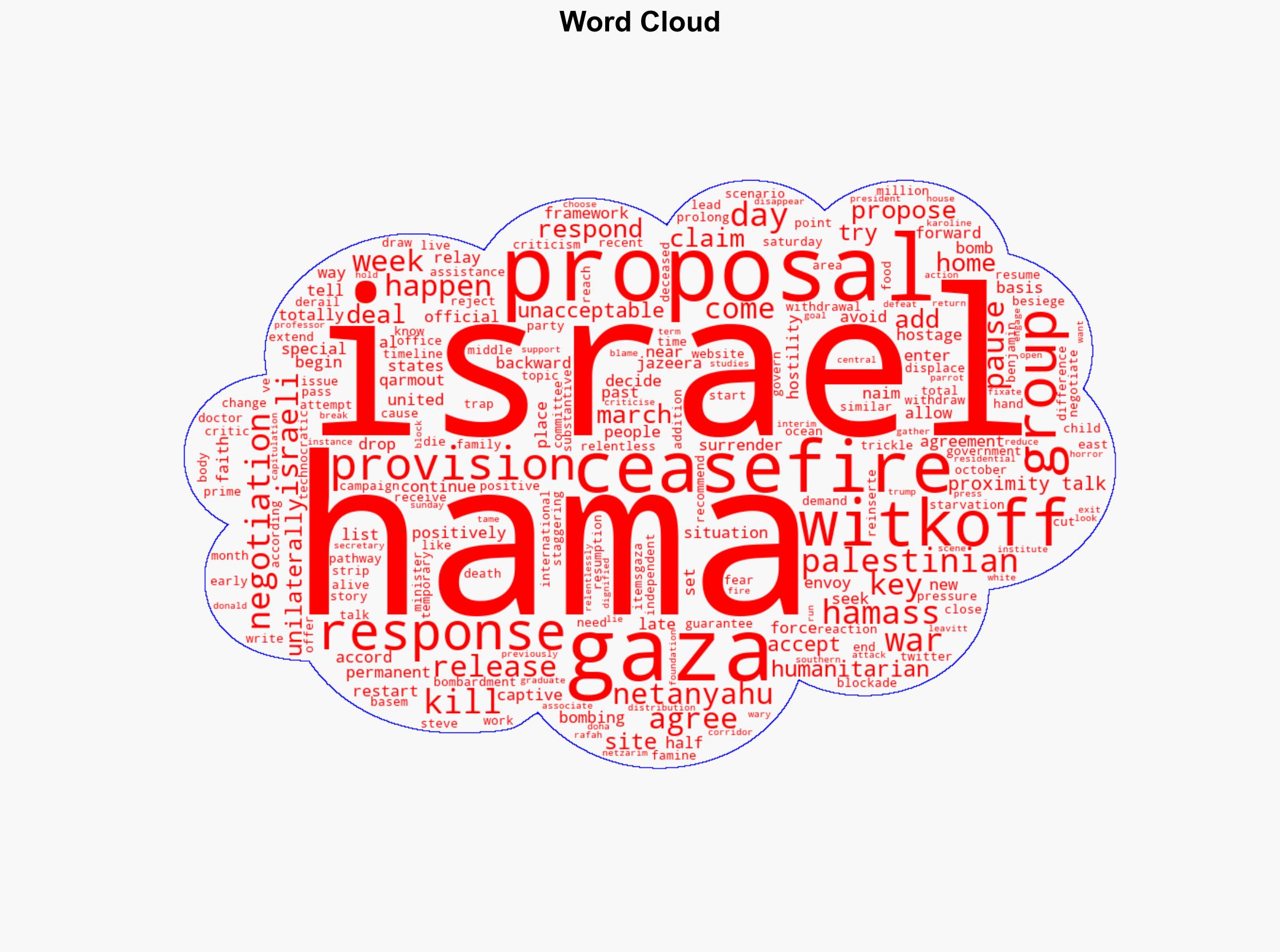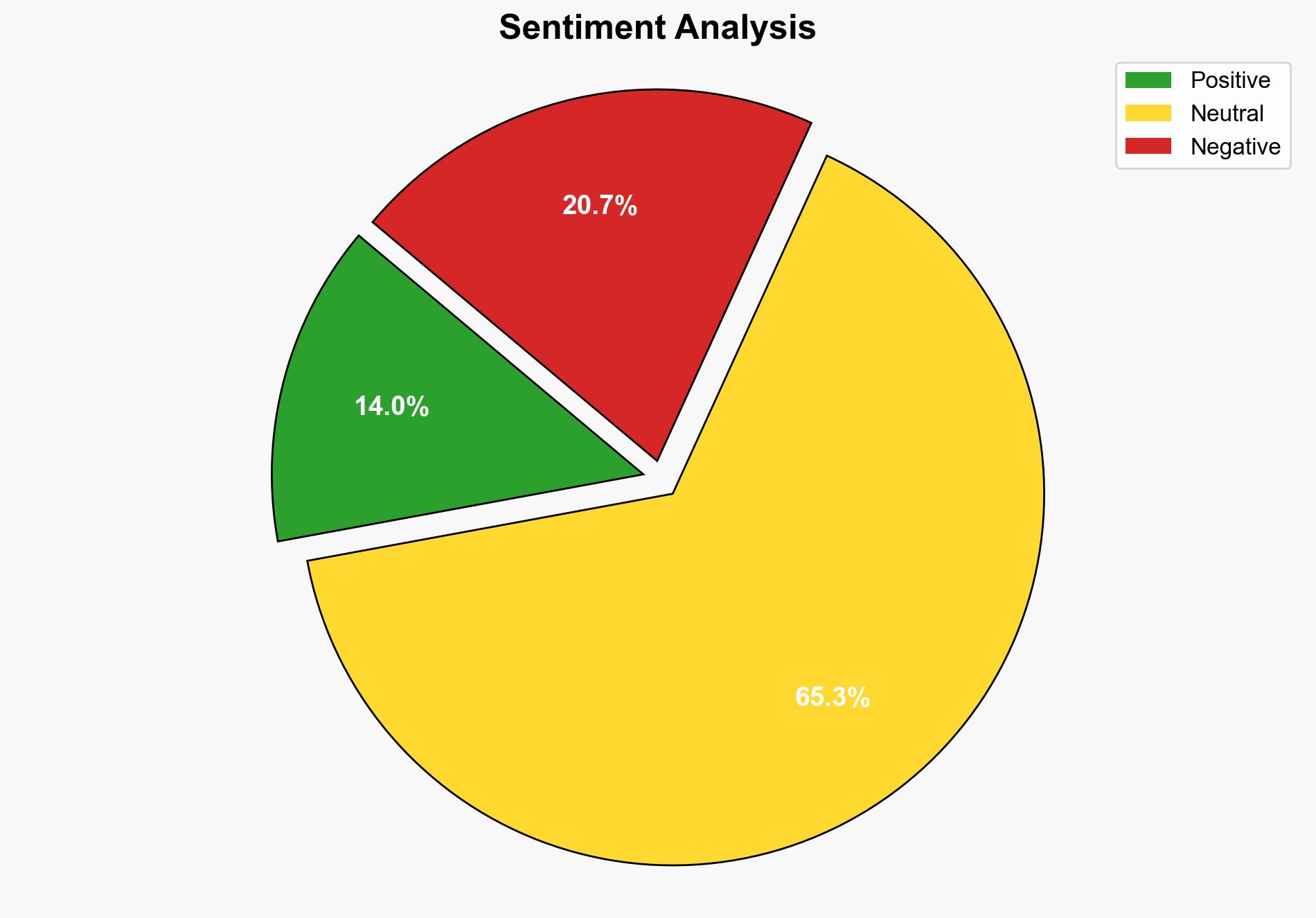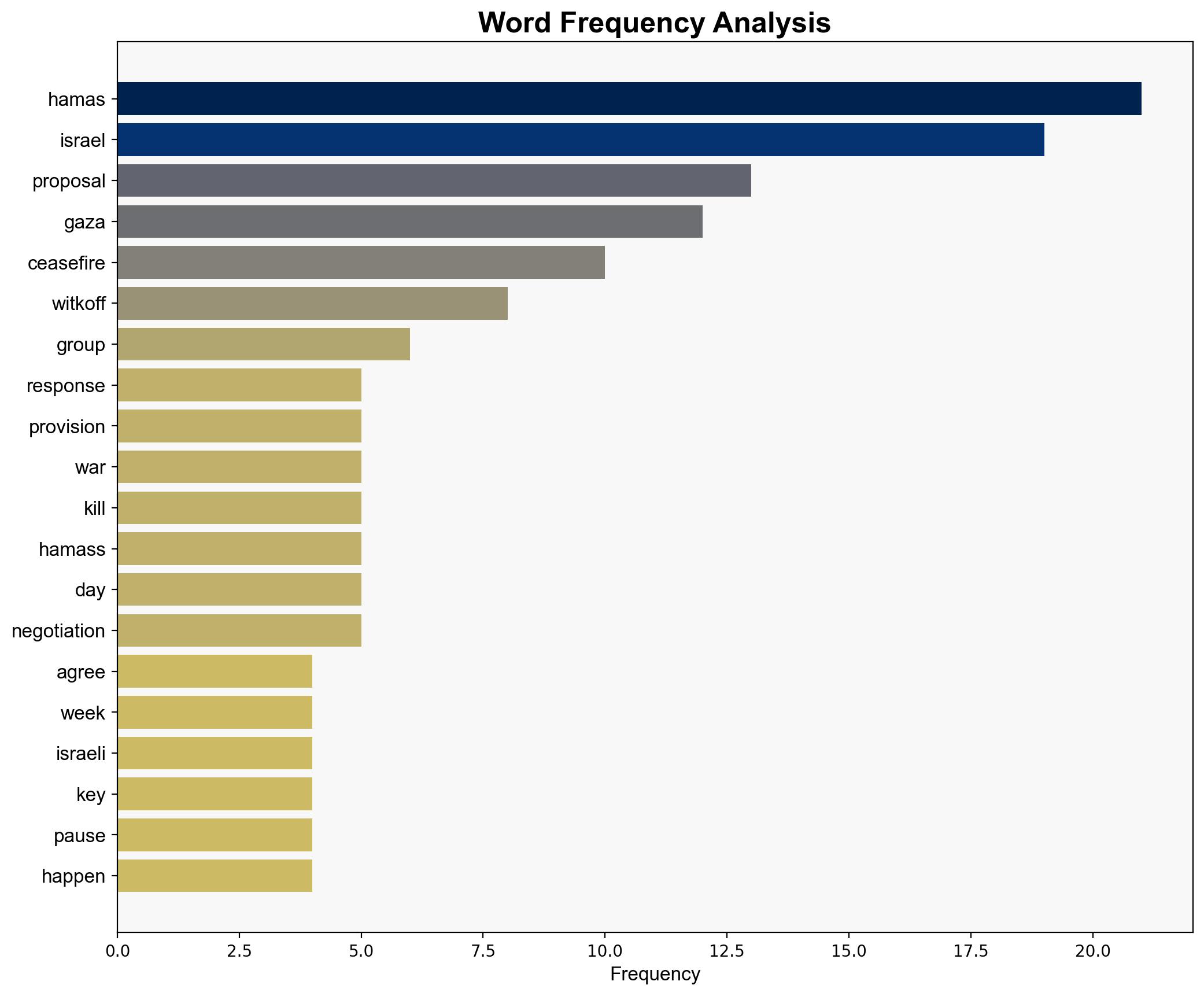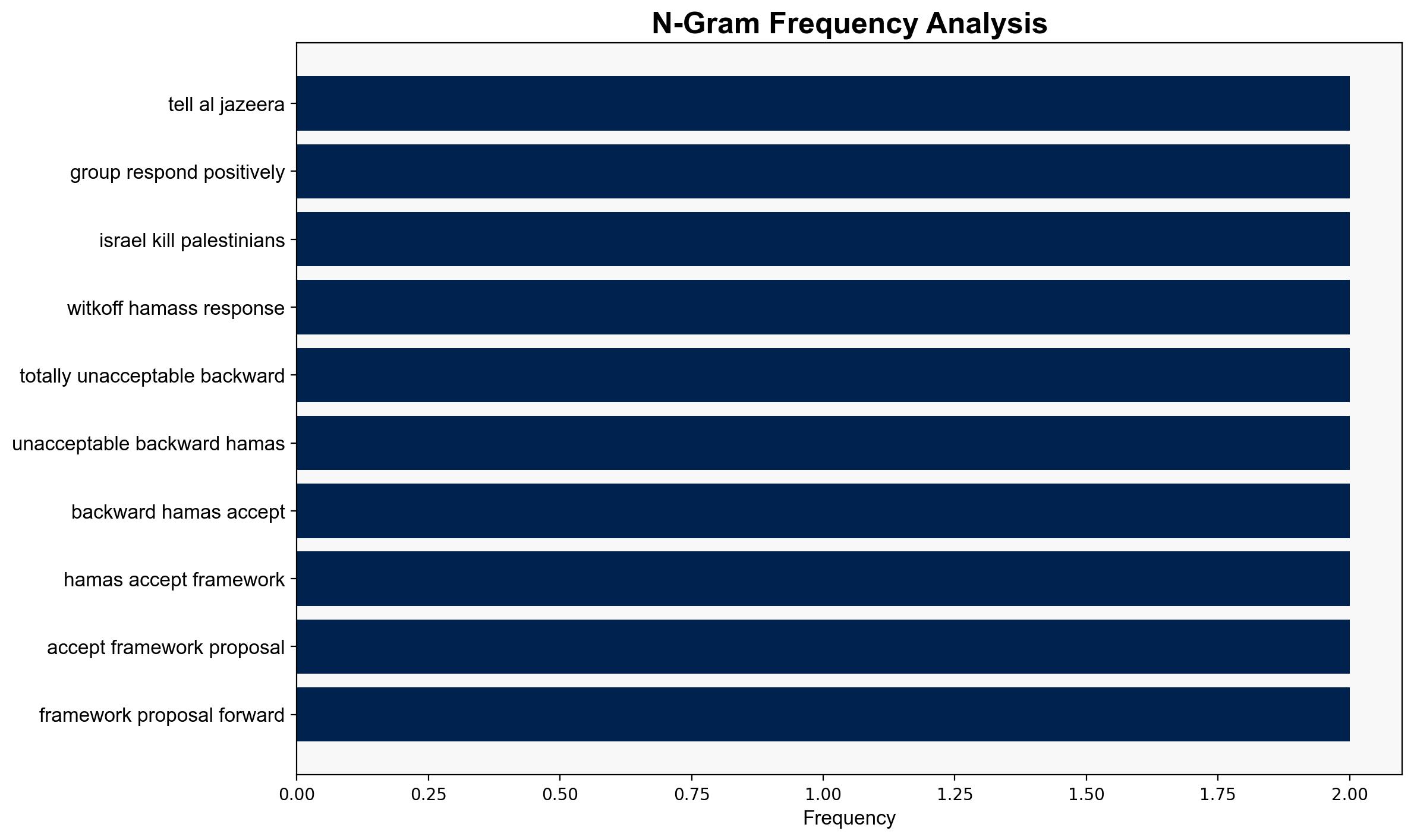Why Hamas is seeking to change the US-proposed Gaza ceasefire deal – Al Jazeera English
Published on: 2025-06-01
Intelligence Report: Why Hamas is seeking to change the US-proposed Gaza ceasefire deal – Al Jazeera English
1. BLUF (Bottom Line Up Front)
Hamas is seeking amendments to the US-proposed Gaza ceasefire deal to ensure a more permanent cessation of hostilities and to address concerns over unilateral actions by Israel. The group’s demands include a pathway to a permanent ceasefire, withdrawal of Israeli forces, and resumption of aid to Gaza. The US proposal, relayed by Steve Witkoff, includes a temporary pause in hostilities, which Hamas fears could be exploited by Israel. The situation remains volatile, with potential implications for regional stability.
2. Detailed Analysis
The following structured analytic techniques have been applied to ensure methodological consistency:
Causal Layered Analysis (CLA)
– Surface Events: Ongoing negotiations and ceasefire proposals.
– Systemic Structures: Power dynamics between Hamas, Israel, and international mediators.
– Worldviews: Differing perspectives on security and sovereignty.
– Myths: Historical narratives of conflict and peace processes.
Cross-Impact Simulation
– Potential ripple effects on neighboring countries, including shifts in alliances and economic impacts.
– Influence on broader Middle Eastern geopolitical tensions.
Scenario Generation
– Best Case: Successful negotiation leading to a lasting ceasefire and humanitarian relief.
– Worst Case: Breakdown of talks resulting in renewed hostilities and regional destabilization.
– Most Likely: Prolonged negotiations with intermittent ceasefires and ongoing tensions.
Bayesian Scenario Modeling
– High probability of temporary ceasefires with intermittent escalations.
– Moderate likelihood of a comprehensive peace agreement in the near term.
3. Implications and Strategic Risks
– Political: Potential for increased international pressure on Israel and Hamas.
– Military: Risk of escalation leading to broader conflict.
– Economic: Disruption of regional trade and humanitarian aid flows.
– Cyber: Increased cyber threats targeting critical infrastructure.
4. Recommendations and Outlook
- Encourage diplomatic engagement to address core issues and prevent unilateral actions.
- Enhance monitoring of ceasefire adherence and potential violations.
- Support humanitarian initiatives to alleviate the crisis in Gaza.
- Scenario Projections:
- Best Case: Strengthen diplomatic channels to solidify a permanent ceasefire.
- Worst Case: Prepare contingency plans for potential regional conflict escalation.
- Most Likely: Maintain flexible diplomatic strategies to adapt to evolving negotiations.
5. Key Individuals and Entities
– Steve Witkoff
– Basem Naim
– Benjamin Netanyahu
– Karoline Leavitt
6. Thematic Tags
national security threats, cybersecurity, counter-terrorism, regional focus





